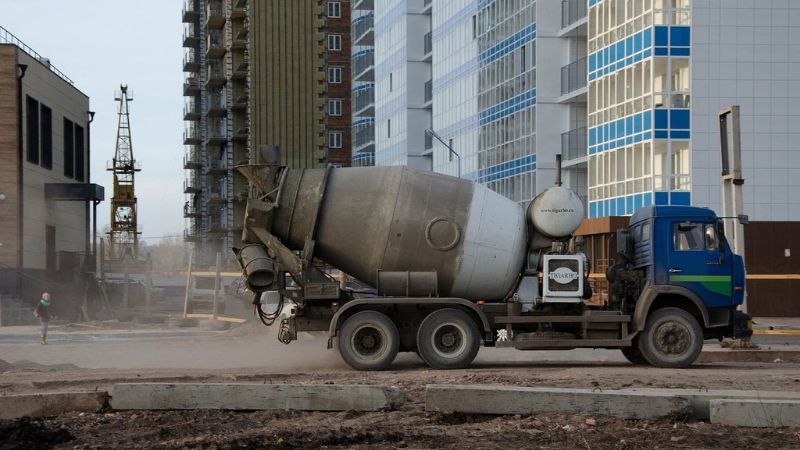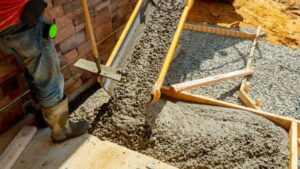Choosing the right concrete mix is crucial for ensuring the durability and strength of any construction project. With various types of concrete mixes available, each serving different purposes, it can be overwhelming to decide which one best suits your needs. Whether you’re working on a foundation, driveway, or any other structure, selecting the appropriate mix can greatly impact the final result. Factors like weather conditions, load requirements, and project size all play a role in the decision-making process. In this blog, we’ll walk you through seven essential tips for choosing the right concrete mix to help you achieve long-lasting and successful results.
7 Tips For Choosing The Right Concrete Mix
1: Consider the Strength Requirements
When choosing a concrete mix, the first factor to consider is the required strength for your project. Concrete strength is measured in pounds per square inch (psi) or megapascals (MPa) and is crucial to ensure the structural integrity of the build. For example, a residential driveway may need a concrete mix with a strength of around 3,000 psi, while commercial structures or heavy-duty pavements might require 5,000 psi or more. The load-bearing capacity of the structure, whether it’s a foundation or a sidewalk, will dictate the necessary strength. Make sure to consult local building codes and regulations to ensure you’re meeting the minimum strength requirements for your project.
Also Read:- Benefits of Fiber-Reinforced Concrete
2: Understand the Environmental Factors
The environment where the concrete will be used plays a significant role in determining the appropriate mix. For instance, if the project is in an area that experiences freeze-thaw cycles, using a mix with air-entraining agents is essential to prevent cracking. Hot, arid climates might require a mix that retains moisture longer to prevent premature drying, which can lead to shrinkage cracks. Similarly, if the concrete will be exposed to chemical agents, such as deicing salts, it’s vital to choose a durable, high-performance mix with resistance to corrosion. Understanding how the environment will affect the concrete helps ensure the longevity of the structure.
3: Consider Workability
Workability refers to how easy it is to mix, place, and finish the concrete. For smaller, detailed projects like patios or decorative concrete surfaces, a mix with high workability is essential. You may want to use a mix that includes plasticizers or superplasticizers to improve flow without increasing the water content, which can weaken the structure. For larger-scale applications like slabs or foundations, workability should also factor in how easily the concrete can be poured and compacted without segregation. Ensure that the mix chosen offers sufficient workability for the tools and labor available for your project.
4: Evaluate Durability Requirements
The durability of the concrete is another key consideration. Depending on the exposure conditions, you may need a mix that resists weathering, abrasion, and chemical attacks. For example, concrete used in coastal areas or exposed to seawater should be designed to resist chloride penetration, which can cause corrosion of steel reinforcement. Additionally, if the structure will face frequent heavy traffic, like in the case of highways or industrial floors, opting for a high-durability mix with additives like fly ash or slag can enhance its lifespan. Understanding the wear and tear the concrete will endure helps you choose a mix that will stand the test of time.
5: Choose the Right Aggregate Type
Aggregates, such as sand, gravel, or crushed stone, make up a significant portion of the concrete mix. The size, shape, and type of aggregate can greatly influence the strength and workability of the concrete. Larger aggregates provide better strength but may reduce the workability, making them ideal for large, heavy-duty projects. On the other hand, smaller aggregates are more suitable for finer finishes and decorative work. Additionally, choosing clean, high-quality aggregates free from contaminants like clay and organic matter will ensure better bonding with the cement paste, leading to a stronger and more durable final product.
6: Adjust for Mixing Proportions
The proportions of the ingredients in the concrete mix—cement, water, and aggregates—are critical to achieving the desired properties. Using too much water can weaken the concrete by reducing its strength and durability, while too little water can make the mix difficult to work with. Cement content also plays a vital role; a higher cement-to-aggregate ratio increases strength but can also increase costs. A well-balanced mix proportion is essential to ensure that the concrete will be both economical and strong enough for your project. For best results, follow the mix design recommendations or consult a professional to determine the correct proportions for your specific needs.
Also Read:- Asphalt vs Concrete Driveway
7: Consider Special Admixtures
Admixtures are additional chemicals added to the concrete mix to enhance specific properties, such as setting time, strength, or workability. Depending on your project’s needs, you may want to incorporate admixtures to improve the performance of the mix. For instance, if you’re working in hot weather, a retarding admixture can slow down the setting process, allowing for more time to work with the concrete. Accelerating admixtures can speed up the curing process in cold conditions, while air-entraining agents can improve resistance to freeze-thaw cycles. Understanding the benefits of different admixtures allows you to tailor the concrete mix for optimal performance in your project’s conditions.
Conclusion
Picking the right concrete mix for your project doesn’t have to be complicated. By understanding your project’s specific needs and considering factors such as strength, weather, and application, you can confidently choose a mix that ensures both durability and efficiency. Follow these seven tips, and you’ll set a solid foundation for your next construction venture.
FAQs
What kind of concrete mix is most popular?
The most commonly used concrete mix is the standard 1:2:4 ratio, suitable for general construction like foundations and pavements.
How can I determine the strength of a concrete mix?
The strength of a concrete mix is determined by its compressive strength, typically measured in MPa or psi, which can be found in the mix specifications.




